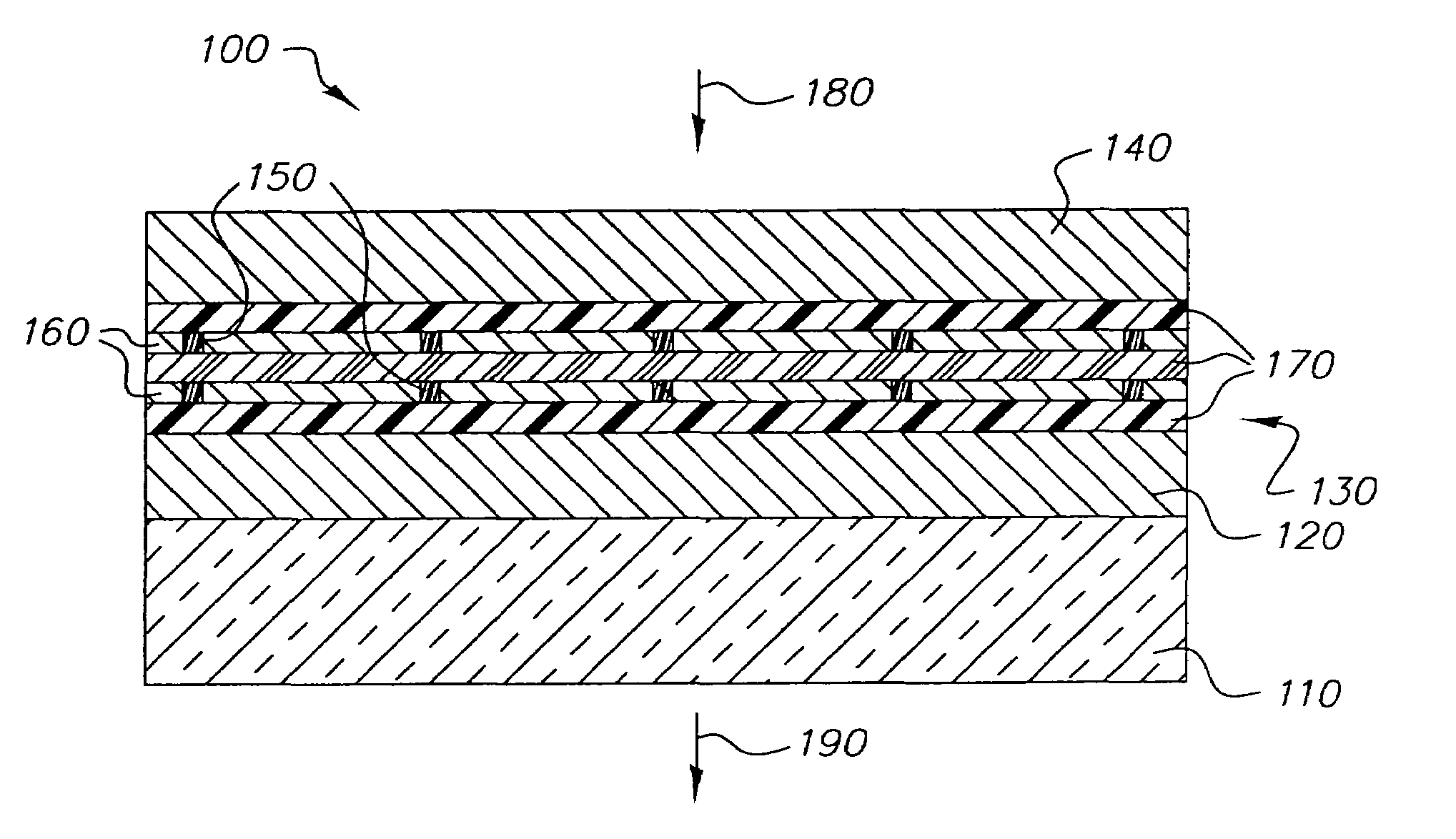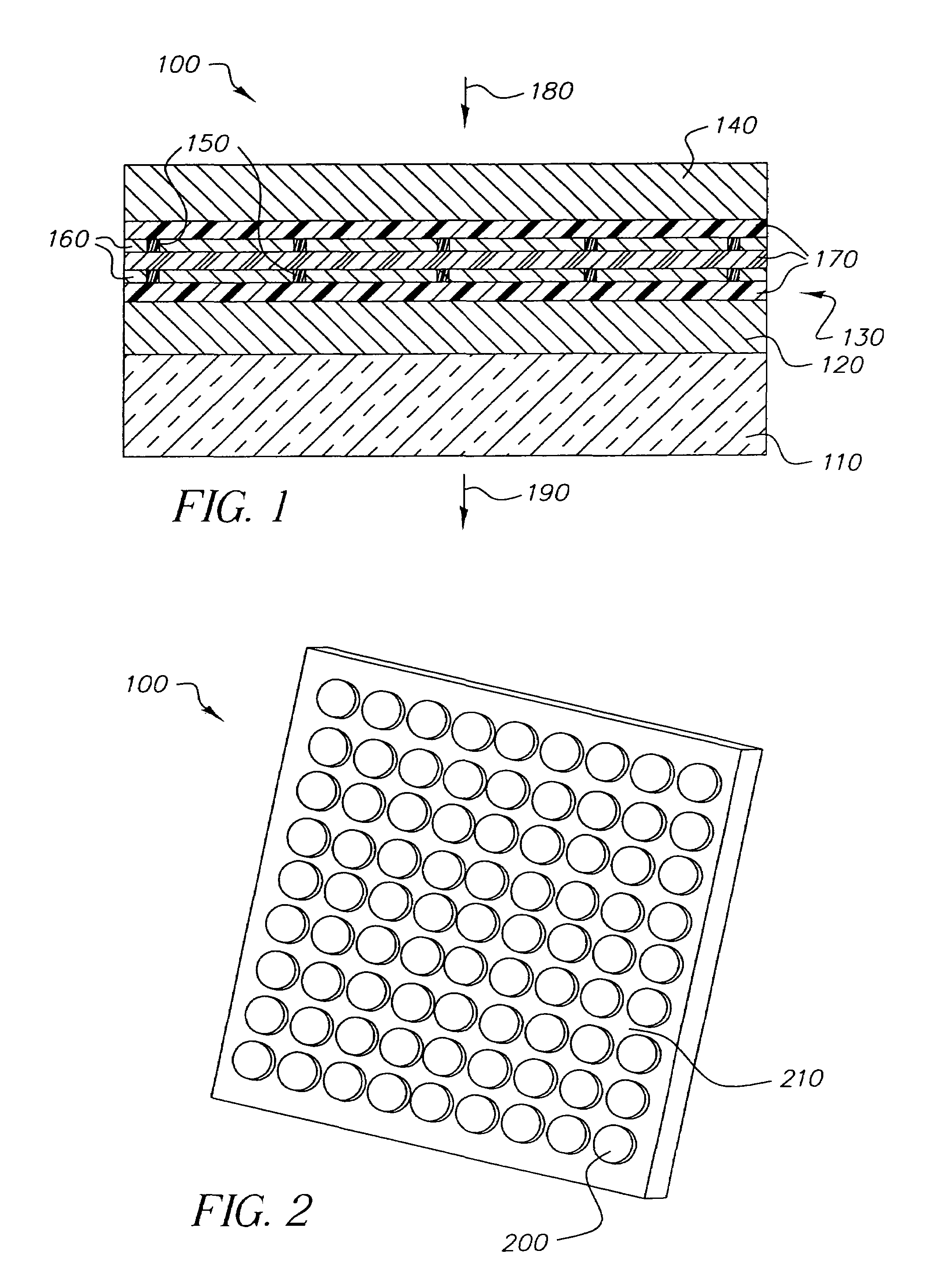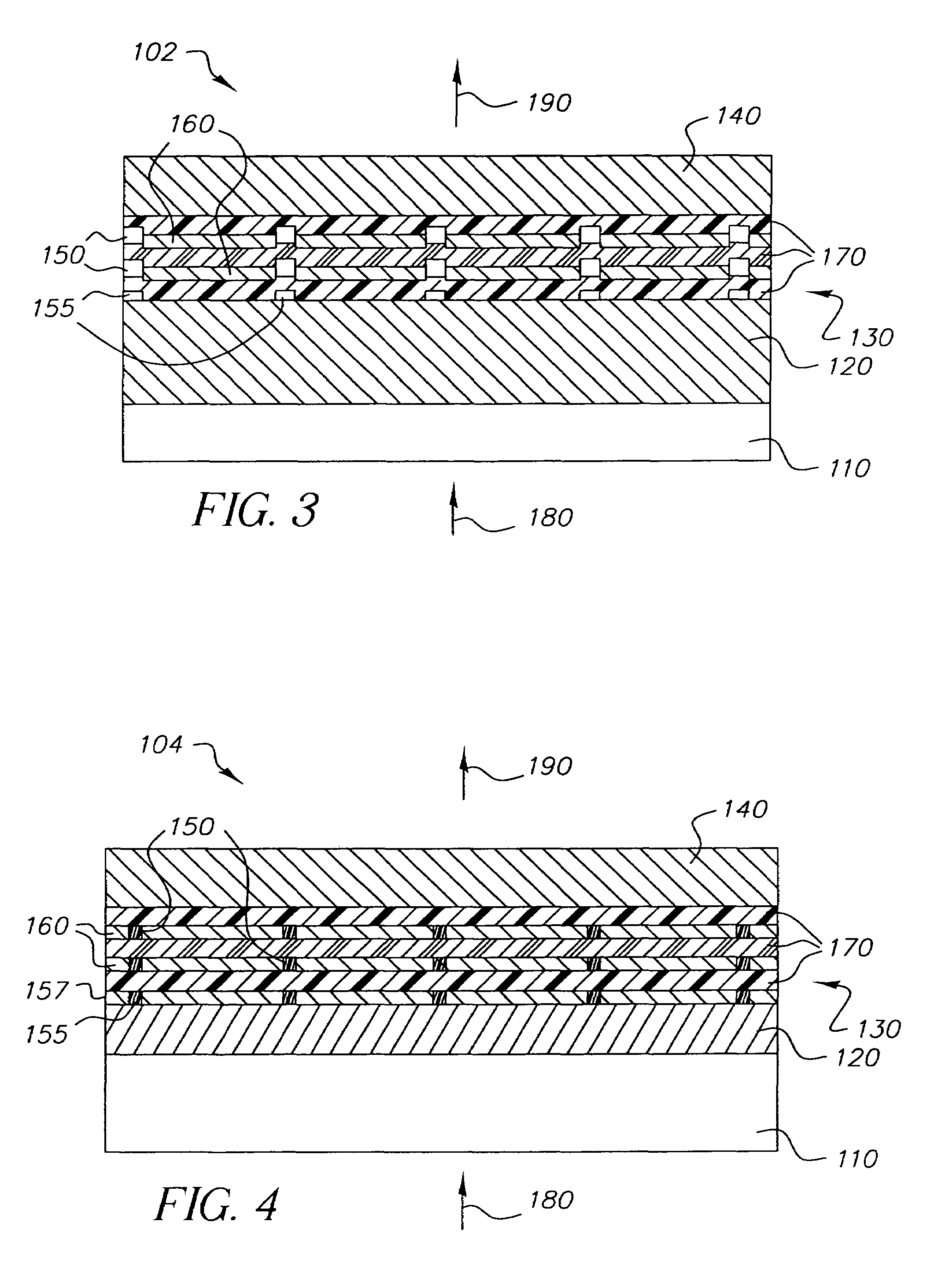Modulating the properties of the gain region at spaced locations in an organic vertical cavity laser array device
a laser array and gain region technology, applied in the direction of semiconductor laser excitation apparatus, excitation process/apparatus, active medium material, etc., can solve the problems of degradation problems of organic materials, density level (and pixel size) is far beyond the capabilities, and the emission properties of gain media are spoil
- Summary
- Abstract
- Description
- Claims
- Application Information
AI Technical Summary
Benefits of technology
Problems solved by technology
Method used
Image
Examples
example 1
[0132]In order to determine the lasing characteristics of the two-dimensional laser array of FIGS. 1 and 2, laser structures were grown on pre-cleaned 6-inch quartz substrates. Over the substrate was deposited, by conventional electron-beam deposition, the bottom dielectric stack 120, which was composed of alternating high and low refractive index layers of TiO2 and SiO2 (a total of 23 layers) respectively. The bottom dielectric stack 120 was designed to reflect light both at 560 nm (the lasing wavelength) and at the pump-beam wavelength of 405 nm (to boost the absorption of the pump-beam 180 by the periodic gain regions 160). As a result the bottom dielectric stack 120 had a measured peak reflectance of ˜99.4% at 560 nm and a reflectance of ˜91% at 405 nm. On top of the bottom dielectric stack 120 was deposited, by high vacuum thermal evaporation, the active region 130, where in order was grown 153 nm of TAPC, 25 nm of Alq with 0.5% of [10-(2-benzothiazolyl)-2,3,6,7-tetrahydro-1,1,...
PUM
 Login to View More
Login to View More Abstract
Description
Claims
Application Information
 Login to View More
Login to View More - R&D
- Intellectual Property
- Life Sciences
- Materials
- Tech Scout
- Unparalleled Data Quality
- Higher Quality Content
- 60% Fewer Hallucinations
Browse by: Latest US Patents, China's latest patents, Technical Efficacy Thesaurus, Application Domain, Technology Topic, Popular Technical Reports.
© 2025 PatSnap. All rights reserved.Legal|Privacy policy|Modern Slavery Act Transparency Statement|Sitemap|About US| Contact US: help@patsnap.com



